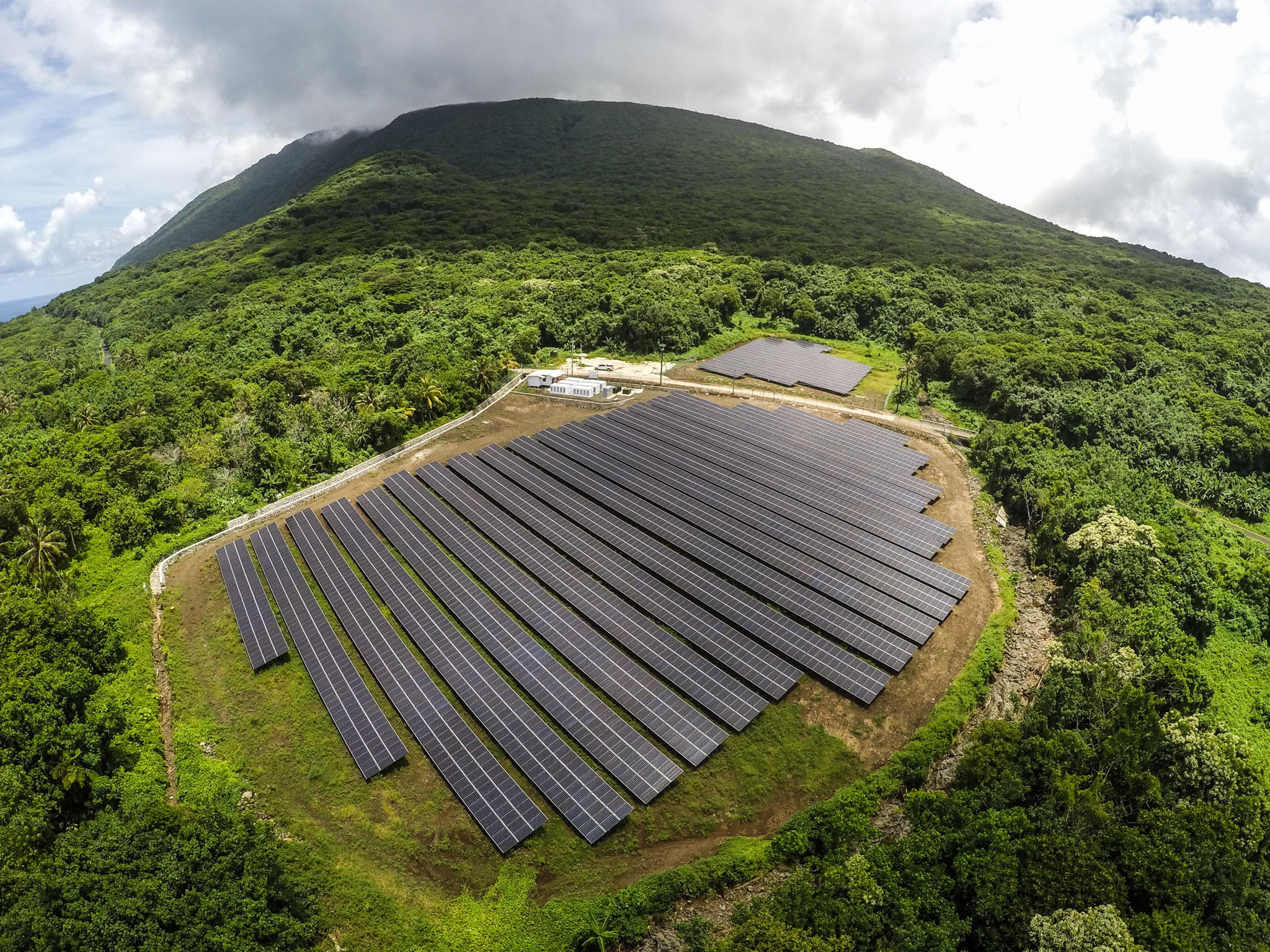The island of Ta‘ū in American Samoa is basking in the benefits of going off-grid. It is now entirely self-sufficient with solar power bringing more electricity and reliability, and greater grid resilience during extreme weather events.
Ta‘ū is a remote island in the Manu’a Islands of American Samoa and is on the climate change frontline, with sea level rise a major threat to island life. It is situated 6,400 kilometres off the west coast of the United States, and provides a home for approximately 600 people. Previously dependent on imported diesel fuel for its electricity, in November 2016 Ta‘ū implemented a new energy initiative – a 1.4 megawatt microgrid that captures and stores solar power for 100% of the island’s energy needs.

The microgrid
The microgrid in Ta‘ū expands over 2.8 hectares on the northern coast of the island, featuring 1.4 megawatts of solar generation capacity from more than 5,000 solar panels, and 6 megawatt hours of battery storage from 60 Tesla Powerpacks. These storage batteries allow Ta‘ū to stay powered for up to three days without any sunlight and to fully recharge within seven hours. The system was tailored to the island’s extreme humidity and proneness to severe tropical storms, with the capability to withstand Category 5 hurricane winds. And the world is ready to see more solar installations.
Overcoming the challenge of fossil fuel dependency
Prior to this project, the citizens of Ta‘ū were accustomed to the daily challenges of living on a remote island dependent on fossil fuel imports. Food scarcity, power rationing and outages, were all part of daily life, and were exacerbated by their vulnerability to extreme weather. Often the diesel generators shipped from the U.S. were delayed by several days, leaving the island-dwellers and small business owners without access to electricity – unable to function at full capacity, and sometimes bringing the island to a virtual standstill.
Kethi Ahsoon, resident and food store owner on the island explained,
“I recall a time they weren’t able to get the boat out here for two months . . . We rely on that boat for everything, including importing diesel for the generators for all of our electricity . . . It’s hard to live not knowing what’s going to happen.”
The new microgrid brings more than electricity to the island of Ta’u. It brings reliability and consistency to the livelihoods of local business owners and residents on the island.
What are the benefits?
Environmental:
Executive director of the American Samoa Power Authority, Utu Abe Malae said, “Shipping diesel has been a long-standing environmental risk, and an inefficient use of taxpayers money.” The solar power and battery storage-enabled microgrid eradicates the risk of a serious environmental impacts, such as diesel delivery ships capsizing on the notoriously dangerous journey. Additionally, the microgrid is projected to offset more than 400 kilolitres of diesel per year, not including the fuel used for shipping the diesel.
Economic:
The microgrid replaces diesel generators with more affordable solar energy, and is designed to optimise performance and maximise energy saving costs. Malae assured that although the islanders’ power bills remain the same at this stage – around US$80-100 per month for an average household – the reliability and self-sufficiency of the new system has ensured economic stability in Ta‘ū, removing the risk of power intermittency and making outages a thing of the past. This economic stability has led the neighbouring remote islands Ofu and Olosega to plan a similar energy initiative.
Employment:
The transition from diesel to solar power has created opportunities in new areas of expertise. Fifteen local men were employed in the construction and solar engineers from Tesla and SolarCity oversaw the process. Some of these locals – previously low skilled men on the island – have now transitioned to full-time jobs as solar power technicians managing the grid.
Where to from here?
Off-the-grid, small communities like Ta‘ū are ideally suited to harnessing solar power. Ta‘ū embodies the sustainable future of island living. American Samoa is aiming to be entirely solar powered by 2040. Ta‘ū is trailblazing a path on transitioning from polluting energy sources to clean, renewable energy – creating employment, providing reliable power and increasing productivity.
The energy revolution is here and is occurring across the world. Investment in renewable energy is out-pacing investment in fossil fuels globally. Australia needs to be preparing for – and joining and facilitating – this transition to a clean energy world. The future is in renewable energy, storage and energy efficiency. Now is the time for action.
Image Credit: Daniel Lin, National Geographic 2017